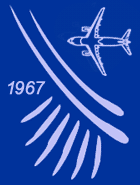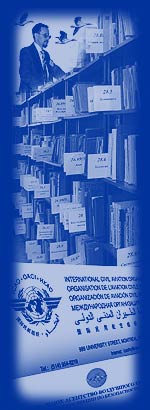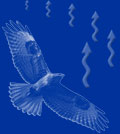30th Meeting of the International Bird Strike Committee, Stavanger (Norway) 2012
According to the Annex No. 14 to the ICAO Convention, standard 9.4.1, all information on the birdstrikes with aircrafts must be registered and collected to make a reliable estimation of the danger caused by birds possible. This information is needed to the fullest extent and should include detailed description of circumstances and consequences of the strikes as this is the first thing which attention is paid to when estimating the risks for a certain airport or airlines, any local region or any other establishment on a larger territory.
Without complete registration of strikes and corresponding information it is impossible to plan efficient activities aimed at reduction (or elimination) of risks posed by birds. This kind of rules violation is a problem which Russian specialists have to face and in this report we would consider the situation at the Russian air transport continuous for quite a number of years.
A system of regulatory requirements has developed in Russian Civil Aviation in the middle of the 80-s, in Soviet period, on the basis of the international documents and national experience. Aviation staff was obliged to register and investigate all cases of birdstrikes. Corresponding activities were held regularly, though not always fully. Slide 3 The national peak of 393 cases of strikes was registered in 1987 (USSR) and in 1988 (already Russian Federation) it made 198 cases.
At the turn of the 80-s and 90-s of the previous century, which was a period of dramatic economical, political and social changes, the regulatory requirements changed as well. New basic rules exempted the aviation organizations from the need to investigate all incidents with birds and to register and count strikes even if they hadn’t caused damage to the aircraft or influenced the course of flight. New rules were presented in the Statement on the Investigation of Aviation Incidents (“PRAPI-88”). Birdstrikes were taken into consideration only under other factors, such the investigation of the engine blades damage.
Opinion and recommendations of the Aviational Ornithology Group were left unnoticed as the new norms seemed quite attractive to the officials of the central aviation bodies. Aviation staff was released of the “unnessesary” (in the opinion of the officials) additional work of collecting and recording of the birdstrikes data and saved the working time. In addition to that, the quantitative index of flight safety relating to the risk posed by birds became significantly higher. These so-called “improvements” happened not only due to the limited registration but also because of real reduction of flights intensity as at that time Russian aviation was experiencing a crisis. The constituencies of such decisions still have great influence and for a continuous period of time the number of registered strikes does never exceed 70.

Img. 1. Dynamics of strikes numbers registered in Russia.
However, data achieved from statistical analysis show that the real number of strikes is significantly higher. In particular, a sign of this is a high degree of damage caused to the aircrafts who took part in those registered strikes. As an example, in 2011 there were registered 75 hits (general number, for all parts of the aircraft) which caused damage to 44 parts, the proportion is 58.7 %. And the damage done to the engines reaches a record of 84.4% (which is 28 damaged engines after 33 hits).
According to the analysis results the parts most frequently damaged in Russian aviation are engine and wing, so for the comparison we have chosen data of these two parts as they appeared most reliable to us. In Table 1 we compared data from another analysis and saw that proportion of engine and wings strikes to all strikes in Russia is notably different from the same proportion in Europe: the difference is 15 to 86 times for engine and from 7 to 21 times for wing.
Apparently there is certain difference in approaches to collecting and processing of the information on birdstrikes, however we take IBIS ICAO data as more reliable due to a wider statistic sample. And on the basis of the rates given we can estimate the level of strikes for previous years in Russian commercial aviation.
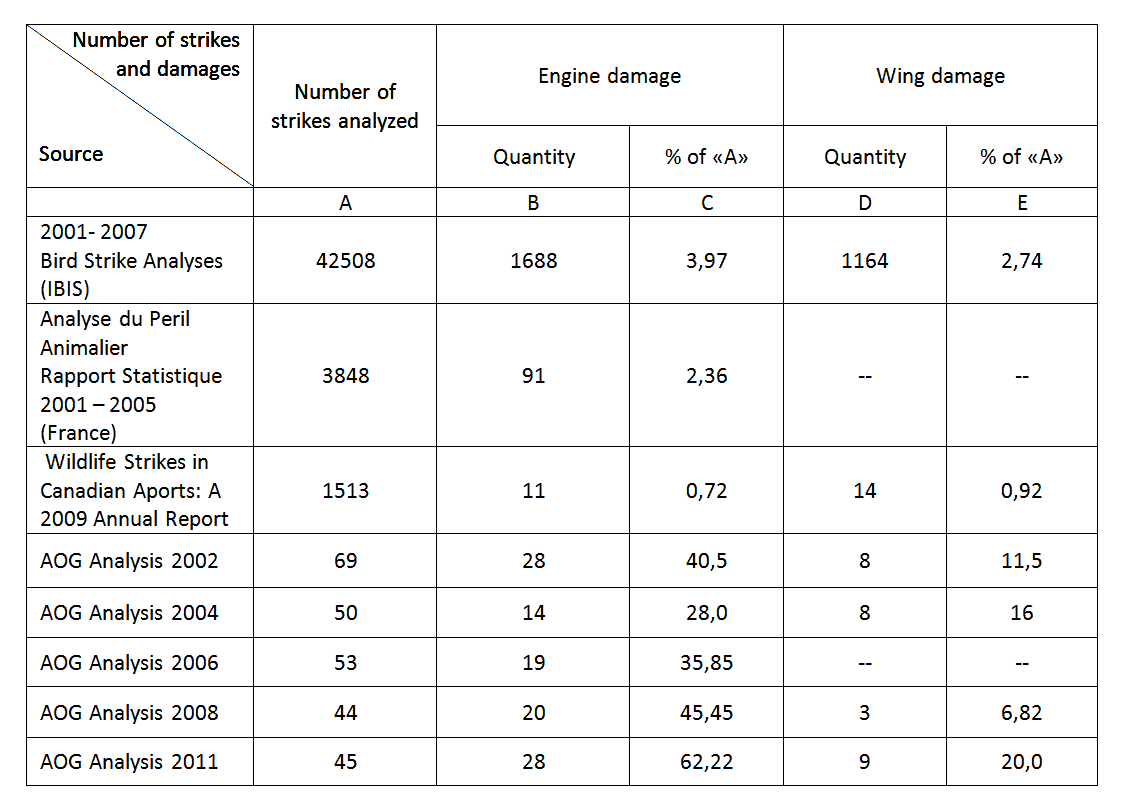
Table. 1. Proportion of damages to number of strikes.
Calculations for the engine and wing showed big differences from 114% up to 358 %. It might be due to the limited number of the statistic sample of the wings, the fact, which of course influences the precision and also that engine damages are revealed more often. Surely, the figures we’ve got are approximate; however they reveal the hidden potential danger and show us its real scale. According to that new data, there occurred from 350 up to 700 cases of birdstrikes in Russia annually and 85-93% of them were not registered. Probably, the hidden scale of the problem is even more significant, as after a reduction in 2004, the number of engine damage cases tended to grow.
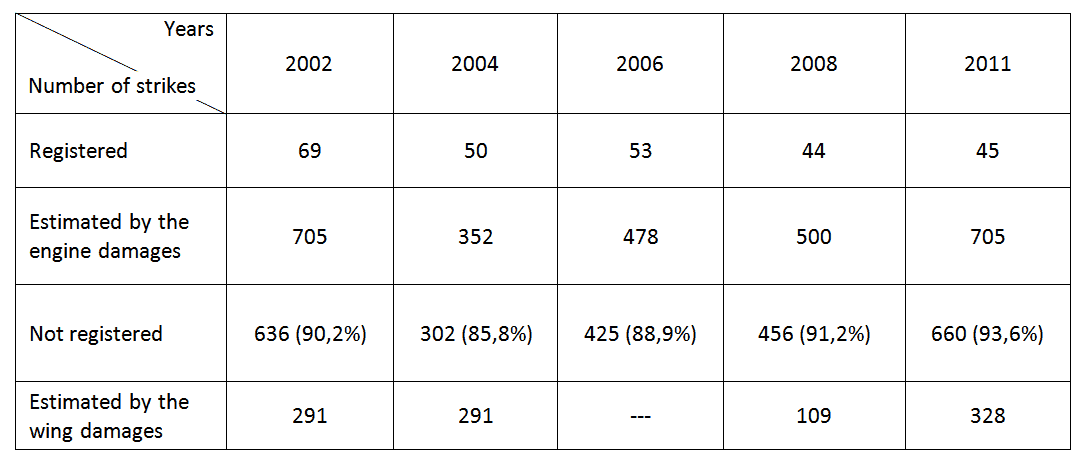
Табл. 2. Estimated numbers of damages.
Concealment of the real state of the birds problem in practice has led to absolute absence of any regulations from the aviation authorities, stagnation of the bird avoidance regulatory requirements, collapse of scientific researches and technical developments in the field. On th 29 July 2007 the most serious incident of last 25 years occurred, that was the crash of AN-12 taking off from the Domodedovo airport which led to 7 deaths.
After a long period of neglect, all the strikes, which led to the damage of the elements of the airframe, engine, or affected their functioning are again to be investigated without fail. And after a number of initiative reports from Russian specialists on the problem of birdstrikes avoidance there was finally introduced a new requirement to register all cases of birdstrikes regardless of the consequences they led to. Still, after a 20-years long break it is far not always fulfilled.
References:
1. Electronic Bulletin ICAO, EB 2009/37 11, December 2009, 2001- 2007 BIRD STRIKE ANALYSES (IBIS)
2. Wildlife Strikes in Canadian Airports: A 2009 Annual Report
3. Analyse Du Peril Animalier Rapport Statistique 2001 – 2005, Jean Luc Briot & Françoi s Giannone
4. «Столкновения гражданских воздушных судов с птицами в России в 2008 г. Аналитические материалы», Рыжов С.К., жур. «Авиатранспортное обозрение», г. Москва, № 102, 2009 г. (Birdstrikes with Civil Aviation Aircrafts in Russia in 2008. Analytical materials, S.K. Ryzhov, printed in the Aviatransportnoye Obozrenije magazine, No. 102, 2009)
5. Materials of the Aviation Ornithology Group
Sergey K. Ryzhov¹, Daria Ryzhova²
¹Aviational Ornithology Group of the State Centre of Flight Safety Civil Aviation,
Moscow, Russia,
²Two Wings Company, Moscow district, Russia



